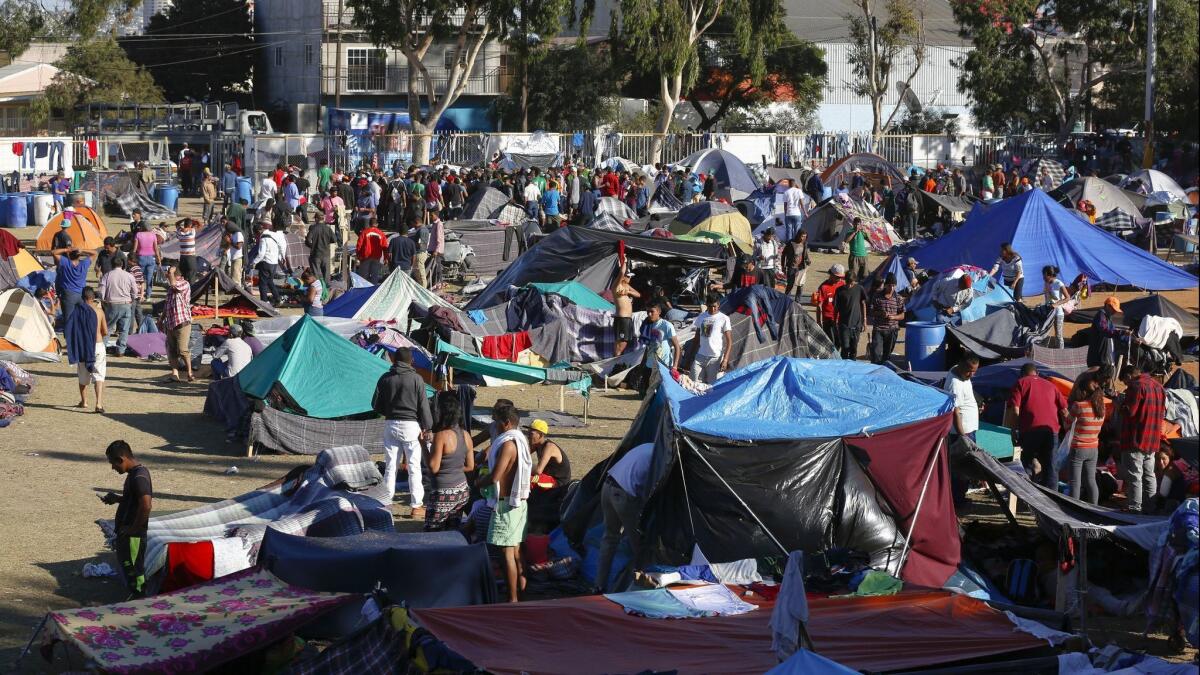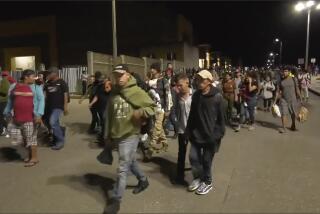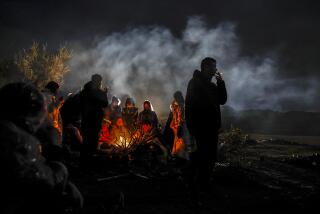Tijuana braces for another caravan coming from Central America

With a new migrant caravan on the way, Tijuana officials have not given much thought to avoiding the chaos that arrived in November with 6,000 Central Americans.
“Well, let’s hope they don’t come here,” said Leonardo Neri, a federal volunteer and the coordinator for a temporary migrant shelter on the eastern outskirts of Tijuana.
Neri said operations at El Barretal are winding down as most of the remaining migrants have found work and alternative living arrangements in Tijuana. He said no plans have been made about whether it will be reopened or used as a shelter when or if the next caravan arrives.
At other shelters across Tijuana, resources remain strained, volunteers are weary and conditions are crowded. Beleaguered aid workers are barely able to look up from one dire situation to the next. Meanwhile, a caravan from Honduras crossed into Chiapas as recently as Saturday.
Tijuana Mayor Juan Manuel Gastélum issued a statement this week refusing to apologize for the initial shelter conditions when migrants arrived in November, saying his primary obligation is to the residents and city of Tijuana.
Tijuana city officials insist the caravan was a federal responsibility from the start.
“The previous caravan arrived in the city at a unique time when we were in a period of transition in our federal government. That will not be the case with this next caravan,” said Cesar Palencia, the city’s director of migrant assistance.
It took the last caravan three weeks to get to Mexico City, but from there they began arriving in Tijuana seemingly overnight by bus. City officials scrambled to set up an emergency shelter in an open-air sports arena that quickly became overcrowded and then flooded.
“We warned from the beginning that we did not have the resources to deal with this amount of people,” said Palencia. “But, still we gave them shelter and food and provided medicine from the very beginning of their arrival in Tijuana.”
When Mexico’s new president, Andres Manuel Lopez Obrador, was sworn into office, the federal government took over operations, and conditions and resources improved at a new, bigger shelter across town.
Palencia said if the federal government is not able to keep the caravan in Chiapas with work, as promised, it will be its responsibility to once again make decisions about how to coordinate resources and safeguard the migrants.
“I believe the position of the government of Tijuana is that the obligation for the large caravan has to be with the federal government, because we do not have the resources and we do not have the personnel to adequately provide for everyone,” said Palencia.
Food nearly ran out during a two-day stretch near the end of November, and some children reported not getting to eat for days.
Nonprofit leaders credit Tijuana city officials with communicating how dire the situation was at Benito Juarez, the first city-run shelter.
“At least, we did not see them sugarcoating the conditions on the news,” said Leti Guzman, who was among a coalition of nonprofit volunteers and the Comisión Estatal de Derechos Humanos who publicly asked the mayor to apologize.
“No, I’m not going to apologize,” Gastélum responded, according to El Sol de Tijuana. “Better, I’d say that the federal government, the Latin American governments and all those people who are against the people of Tijuana, apologize to us.”
Guzman said the response was expected. She said she did not anticipate operations will run more smoothly with the next caravan and was bracing for the possibility they may be worse with resources already strained.
“Tijuana is doing bad itself with the cartels and the politics of Tijuana and we see a lot of opposition from the residents. It’s really hard in this scenario. I think it’s hard to address this in a way that satisfies all sides,” she said.
Migrants faced violence, with Tijuana residents first throwing rocks at them while they slept in the downtown city shelter and then canisters of tear gas when they later moved to the federally run shelter outside town. Two young Honduran teenagers were brutally killed.
To their credit, leaders said, Mexico’s National Employment Service did well matching local companies in Tijuana with Central American migrants looking for work. They helped 2,900 migrants process their applications for humanitarian visas and operated a six-day-a-week federal job fair to help many find employment in Tijuana.
More to Read
Start your day right
Sign up for Essential California for news, features and recommendations from the L.A. Times and beyond in your inbox six days a week.
You may occasionally receive promotional content from the Los Angeles Times.






